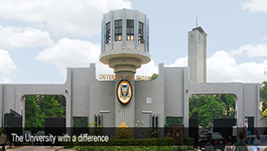Tertiary institutions in Nigeria failed to utilise over 400,000 admission slots in 2020 despite hundreds of thousands of candidates available to fill such spaces, a report by the Joint Admissions and Matriculations Board (JAMB) has said.
The culpable institutions include universities, polytechnics and colleges of education, JAMB stated in the report.
However, in interviews with PREMIUM TIMES, officials of some of the institutions faulted the government’s method of allocating admission quota, saying it is not realistic.

According to a JAMB policy document obtained by this newspaper, the over 400,000 unallocated admission spaces represent 43.78 per cent of the total admission quota in last year’s Unified Tertiary Matriculation Examination (UTME).
Data extracted from the document show that tertiary institutions only admitted 551,553 candidates out of the 956,809 admission quota available to them from the 2020 UTME.
While over 40 per cent of the admission quota was not utilised, “some institutions took undue advantage to manipulate quota of regulated programmes during preparation of parameters to admit candidates more than the approved capacity,” JAMB said.
Quota system
The quota system is a selection method (for employment, school admission, among others) that, after reviewing an institution’s facilities, allocates certain percentages based on specific qualities, needs or profiles such as ethnicity and state of origin.
This system of university admission was introduced in an attempt to provide admission for candidates into tertiary institutions using the federal character policy of the federal government.
The quota represents the number of candidates that should be admitted into the tertiary institutions in one academic year from each state.
The system comprises important elements such as academic merit, which is determined by the candidates’ university matriculation examination scores, and it is allotted 45 per cent.
The second element is educationally disadvantaged states with 20 per cent, the catchment areas with 25 per cent, and 10 per cent to the discretion of vice-chancellors.
Despite the fact that JAMB has been guided by these provisions in the admission process for years, tertiary institutions have not been able to meet the quota assigned to them, denying admission to candidates including those with high scores.
The Admission Figures
In 2020, a total of 1,949,983 sat for the UTME. Less than half of them were expected to be admitted based on an admission quota of 956,809 to all the tertiary institutions. Of the total, 601,775 was allocated to degree-awarding institutions and 235,240 was given to all institutions that award National Certificate Examination.
A total of 115,243 was given to institutions that award National Diploma (ND), while 4,870 was allocated to National Innovative Diploma (NID) awarding institutions.
Data shows that out of the 601,775 allocated for admissions into universities or degree-awarding institutions, only 422,445 candidates gained admission. This means 179,330 vacancies were unused.
Also, out of the 235,240 slots allocated to colleges of education, only 47,920 were admitted. About 187,320 spaces to admit more candidates remained unused, representing 79.6 per cent.ADVERTISEMENT
For ND awarding institutions, 79,891 candidates got admission out of the 115,243 allocations, leaving 35,352 spaces unoccupied.
Likewise, only 1,297 candidates got admissions out of the 4,870 allocations given to NID institutions. A total of 3,573 spaces remain unused.
Reacting to the unused admission places, the Registrar of JAMB, Ishaq Oloyede, urged the institutions to do more.
“Candidates who are seeking admission, for instance to the faculty of agriculture or education, even if they score zero, should be admitted,” Mr Oloyede said in an interview with Leadership Newspaper.
He said the students who applied are less than the available quota.
“Even if you take all of them, there will still be vacant spaces,” Mr Oloyede said, calling on institutions to consider students who applied for these two courses to avoid leaving unused quotas.
JAMB’s figures not realistic
In response to the observations by JAMB, university officials and administrators say the admission quota figures are theoretical and not realistic.
In an interview with PREMIUM TIMES, the Vice-Chancellor of the University of Abuja, Abulrasheed Na’Allah, said most universities do not have the capacity and adequate facilities to accommodate applicants to fill the quota allocated to them.
“We have some departments with students up to 300 and we need students to be comfortable, convenient and get to listen to their lecturers. Our classes are not sufficient and now you are asking to do more,” he said.
The administrator then provided some context on why the allocated quotas are not compatible with the admission capabilities of the institutions.
“What happened is, during the accreditation process, there is a kind of natural growth expected of universities but unfortunately natural growth is not realistic to available resources,” the professor said.
In other countries they have natural growth which we should have too in Nigeria, he said.
“But resources available to Nigerian universities are unnatural.
“For example, the reality here is we can only admit 50 students, so if the quota system is giving me 100, then what about my reality,” Mr Na’Allah said, urging the government to increase its funding of public universities.
This point was supported by Josiah Ajiboye, the head of the Teachers Registration Council of Nigeria, TRCN, who said: “Our argument at ASUU over the years is that you need to expand existing universities to be able to accommodate more students.”
“The government should expand our second and third-generation universities to make sure they are able to absorb more candidates,” the professor said. “Some of these third-generation universities still have the same number of lecture rooms, halls and laboratories.”
“It’s not possible for them to admit more,” Mr Ajiboye added.
PREMIUM TIMES






